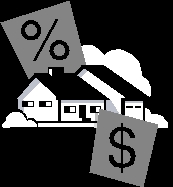The Do’s and Don’ts of Buying Vacant Land
November 13, 2012 Leave a comment
 Imagine as you scan the classified real estate listings you see a listing that seems to read like an answer to your prayers. Forty acres with a year round creek, part wooded, part pasture, marketable timber and low down payment and low monthly payments. Its seems like you found the buy of the century. You decide to take a look and it turns out to be more perfect than the description in the advertisement. The trees are huge and you follow the creek to a beautiful green meadow. The agent sees your enthusiasm and asks if you would like to put down some earnest money and make an offer to purchase. At this point you know the property is what you want and you figure if you don’t make an offer someone else will surely come along and buy it. You are prepared to shell out a big portion of you saving s for the down payment. But wait….. before you make that purchase keep in mind the old motto, “let the buyer beware.” Let’s look at several pitfalls or problems that could occur when buying a piece of real estate, particularly vacant land.
Imagine as you scan the classified real estate listings you see a listing that seems to read like an answer to your prayers. Forty acres with a year round creek, part wooded, part pasture, marketable timber and low down payment and low monthly payments. Its seems like you found the buy of the century. You decide to take a look and it turns out to be more perfect than the description in the advertisement. The trees are huge and you follow the creek to a beautiful green meadow. The agent sees your enthusiasm and asks if you would like to put down some earnest money and make an offer to purchase. At this point you know the property is what you want and you figure if you don’t make an offer someone else will surely come along and buy it. You are prepared to shell out a big portion of you saving s for the down payment. But wait….. before you make that purchase keep in mind the old motto, “let the buyer beware.” Let’s look at several pitfalls or problems that could occur when buying a piece of real estate, particularly vacant land.
Does the property have access?
It cannot be emphasized enough how important access rights are. Be sure beyond a shadow of a doubt that the land has permanent, legal and transferable access and is specified in the deed. There once was couple that bought a lovely piece of property and who built their dream house based on the neighbor’s assurance that he had no objection to them using his road to access their property. Well at some point the couple had a minor disagreement with the unhappy neighbor who promptly blocked the road and denied access. They tried to access their property though a bordering piece of government land but eventually the agency got wind or what they were doing told them to cease and desist or risk trespassing charges. The unfortunate couple who invested everything in the house did not have money left for an expensive legal battle and ended up abandoning the place which cost the m the total amount of theirs savings! You can see it is imperative that you make sure that no one can stop you from getting to your property. If it’s possible to purchase access in the form of an easement from a neighbor or government agency, make sure it is transferrable and not revocable. This is especially important if you later decide to sell.
What about water and septic concerns?
Water supply and soil drainage are two more critical concerns. That creek on your dream property is lovely and offers a picture perfect view but you should also take the time to learn if the water on your site is part of a watershed or part of a protected water way. You may discover that you do not have the legal right to use a drop of it without breaking the law. In some cases if the water way is protected you may have to keep livestock or septic tanks several hundred feet from the creek or worse prevent you from putting any type of septic tank on the property. It is best to refrain from buying a watershed property unless you ca n get a written statement from the city specifying your rights and that you are certain you can comply with every detail of a regulated watershed agreement.
What are the soil conditions?
The installation of a septic tank will be necessary at some point if you do not have a local sewer service to hook up to. Before you buy, you should make a several “perk ‘tests before buying the property to determine if the soil conditions on your site are conducive to adequate water drainage. If the site does not “perk” your permit for a legal septic tank will not be approved. I know of one case where the owner put up the building first only to find out his property did not perk and the town would not approve the installation of his septic system. He could not use the building for the purpose he originally intended and it remained an overpriced storage building because plumbing could not be installed. There have also been cases of properties with soil that drains too fast as with properties located in sandy regions.
What about the mineral rights?
Most people don’t consider mineral rights to be of much importance. When one thinks of mineral rights they think of gold or crude oil. But there was one instance for example of one man that bought what he thought was an ideal property of building a house and planting an orchard. He invested a fortune in his land to grow the trees and after a few years began to produce a crop that finally gave him an income. The man knew he didn’t have minerals rights but the real estate agent assured him that it wasn’t important. Several years went by and he was coming home from town only to discover bulldozers were demolishing his house and one or more rows of his orchard already gone!. Apparently, coal had been found on his land and it seems that his deed stated plainly that the only compensation due him was for the cost of the materials of his house and barn. In this situation, the farmer had no legal recourse and could not recover the time and money he invested in his orchard. Just because there has been no minerals of value that has been found on your property when you buy it does not guarantee that one or more minerals could be discovered in the future or that some new use won’t be discovered for an existing mineral that you thought was worthless.
Are utilities available?
When buying a property with a remote location you should know that if you r property is a considerable distance from the nearest utility line, some companies may reserve the right to refuse service to an area that they determine is too costly to maintain. Check with the local power company and make sure that service to your area can be purchased and what it will cost. Depending on the access and where you are planning to build, more than one utility pole may need to be purchased, driving up the cost of site development significantly.
Who owns the timber rights?
In most cases timber rights do not pose much of a problem. However if you are buying a lot of land, make sure that someone does not have timber contract on the place. If there is, extreme caution should be used before buying. You will want to know when the contract is set to expire. Also you will want to know what condition the loggers are required to leave the property in after the harvest. If you don’t, you could come home to a terrible mess that could cost you a lot of money to fix. After looking over the limber contract you may decide to lower your offing amount or reconsider buying the property all together.







